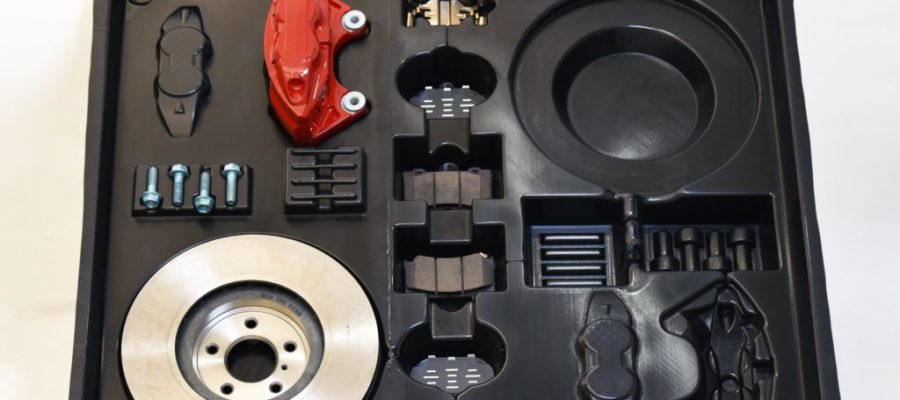How FDM Thermoform Tooling Works
3D Printing
In this day in age, there’s a good chance you interact with multiple thermoformed products on a daily basis, whether that be in your grocery store, car, or even your fridge. But what exactly does it mean for something to be thermoformed? Thermoforming is a conventional plastics forming process where heat is used to bring a sheet of plastic to its sagging point, or when it becomes pliable. The heat source is removed and the plastic sheet is positioned onto a mold. A vacuum is then drawn through the mold and the sheet conforms to the surface.
Thermoformed products are prevalent throughout manufacturing industries including: medical, outdoor/recreational equipment, automotive and aerospace. Typical products most commonly seen are trays, various housing components, wind deflectors, tubs, and most frequently — packaging.
With conventional processes, creating the tools for thermoforming can be long and grueling. Often these tools, especially if outsourced, can take anywhere between 6-14 weeks depending on tool complexity and CNC capacity. This timeline is especially unattractive when you only need tooling for a short production run or a prototype tool. Typically, short-run, prototype and bridge tooling are made of a lower-cost tooling board but these materials still need to be machined to shape, and are susceptible to degrading after a short number of cycles, leading thermoforming companies to look for alternative solutions.
With 3D printing technology, capable FDM thermoform tooling can be made in a matter of hours or days depending on the size of the tool and are a fraction of the weight of a traditional steel or aluminum tool. The reduced weight improves efficiency through ease of set-up and changeover as well as other tool-handling operations. Since FDM parts are inherently porous, allowing air to be pulled directly through the tool, vacuum channels are unnecessary. Finalizing the parts with post-processing and finishing, the tool can be made to more selectively pull vacuum allowing for more precise feature molding.
So how do manufacturers benefit from FDM thermoform tooling? It allows you to achieve increased operational efficiency, economical low-volume production, and life-cycle sustainability. It also allows for lower costs, reduced waste, and shorter lead times than traditional tooling.
If you are interested in exploring this solution for your organization please speak with one of our additive manufacturing experts https://goo.gl/qHnouO
